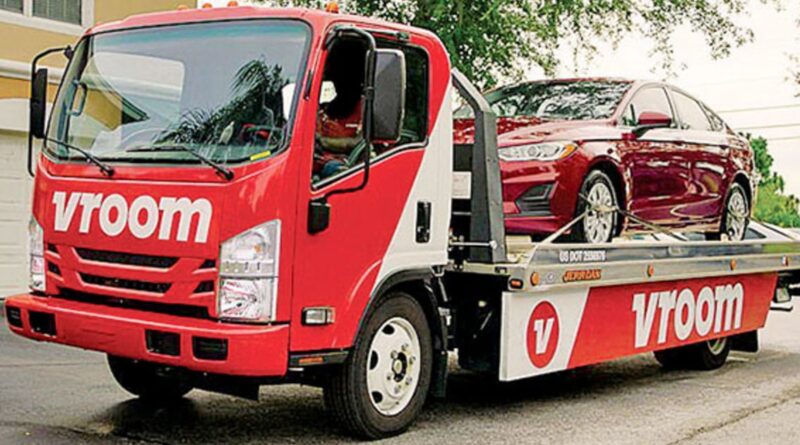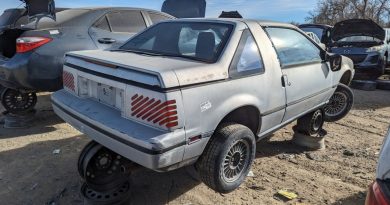Vroom’s Tom Shortt: Growth had to slow in 2022
Online used-vehicle retailer Vroom Inc.‘s initial public offering in June 2020 arrived at a fortuitous time.
It happened during a pandemic that necessitated more consumers buying vehicles partly or entirely online. As a result, Vroom sold more used cars and trucks and its shares skyrocketed to a record high closing price of nearly $74 in September 2020. Then came 2022, a year in which investors in Vroom and its competitors grew wary of how much cash the companies were still burning through to grow and the net losses they were recording.
In May 2022, Vroom announced plans to scale back. The company appointed COO Tom Shortt — who previously oversaw an e-commerce supply chain strategy at Walmart and held roles at Home Depot and ACCO Brands, among others — to become CEO and lead a long-term business plan that prioritized improving vehicle economics and reducing costs.
Shortt, 54, spoke with Staff Reporter C.J. Moore this month about Vroom’s shift from its pandemic pace of growth and more. Here are edited excerpts.
Q: Did Vroom make the switch from growth to prioritizing profitability and other initiatives at the optimal time?
A: I wish we would have done it earlier. When I entered the business, which was [early] January 2022, and I saw our landscape I immediately was like, ‘We need to slow down growth.’ But at the time, the market sentiment wanted growth. I think when we announced Q4 earnings in February 2022, the market sentiment clearly changed [to] ‘Hey, we don’t care about growth. You’re not gonna be able to survive if you continue to burn cash this way.’ That was the point where it was clear [Wall Street] wanted to pivot. We started working on that Jan. [3], and then we announced the pivot [May 9].
One of the goals Vroom has laid out in its long-term business plan is to fix its vehicle titling and registration processes. [Vroom agreed in June 2022 to pay $87,000 to settle a complaint brought by Florida regulators about title transfer delays]. When did Vroom start largely executing on that?
[On] Feb. 2, we started hiring people in Houston to fix the title and registration process. That was early days. We very quickly developed what we called the Digital Title Vault where we took every title, we read it with optical character recognition and we locked down our process to make sure we had a good title. We connected all our systems to make sure a car couldn’t be listed for sale unless it had gone through all these processes in titling. We started having daily calls on title and registration Feb. 1.
(Vroom said Shortt received “a significant number” of title and registration complaints each week in spring 2022. Shortt told Automotive News he received none the first week of May 2023.)
The company has made a number of work force reductions, with the most recent in January and April. Do you foresee any more this year?
When we have attrition, our goal will be not to replace.
Vroom sold 3,933 vehicles through e-commerce in the first quarter of 2023. What’s the right number of annual vehicle sales for slowed- growth Vroom?
What’s interesting is we’re not trying to hit a unit goal. In fact, we didn’t even give unit guidance for the year. The reason is, in order to make this a profitable business, we have to do several things at the same time: We have to buy more units, sell more units, hit the appropriate amount of [gross profit per unit], while at the same time we’re driving down marketing costs per unit, logistics costs per unit, selling costs per unit, title and registration support costs per unit and fixed costs per unit. We’re literally every day figuring out what level we need to turn all eight of those dials to create a profitable business. That is what’s determining how many units we’re going to sell. As we make progress on every one of those initiatives, the number keeps changing.
Vroom said it is now ramping up vehicle acquisitions and marketing. Were vehicle acquisitions paused in 2022?
They weren’t paused, but because we were shrinking the business, we were buying enough vehicles to keep our reconditioning facilities operating. We were buying the bare minimum to keep our operations running. We’ve had way too much inventory for some time because we had to fix all the title issues. Now that we have all that cleaned up, what I mentioned [on the company’s first-quarter earnings call] is we had a really strong March and we started slowly saying, “Okay, we’re going to eventually have to start buying more cars than like the bare minimum to keep our operations running.”
Source : Autonews.com




